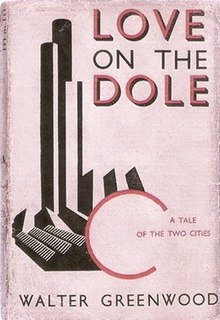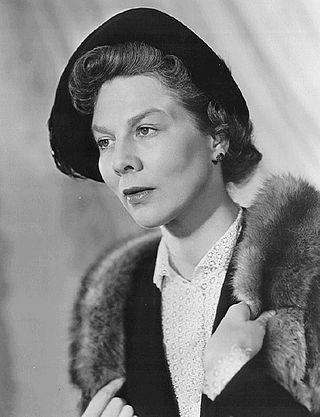
Dame Wendy Margaret Hiller, was an English film and stage actress who enjoyed a varied acting career that spanned nearly 60 years. Writer Joel Hirschorn, in his 1984 compilation Rating the Movie Stars, described her as "a no-nonsense actress who literally took command of the screen whenever she appeared on film". Despite many notable film performances, Hiller chose to remain primarily a stage actress.

Buster is a 1988 British romantic crime comedy-drama based on events from the Great Train Robbery, starring Phil Collins and Julie Walters.
Ronald Gow was an English dramatist, best known for Love on the Dole (1934).
Walter Greenwood was an English novelist, best known for the socially influential novel Love on the Dole (1933).
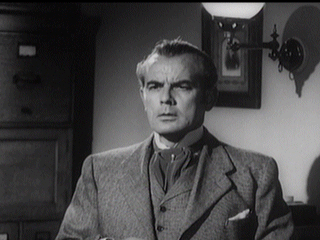
Clifford George Evans was a Welsh actor.
The social novel, also known as the social problemnovel, is a "work of fiction in which a prevailing social problem, such as gender, race, or class prejudice, is dramatized through its effect on the characters of a novel". More specific examples of social problems that are addressed in such works include poverty, conditions in factories and mines, the plight of child labor, violence against women, rising criminality, and epidemics because of over-crowding and poor sanitation in cities.

Love on the Dole is a 1941 British drama film starring Deborah Kerr and Clifford Evans. It was adapted from the novel of the same name by Walter Greenwood. It was the first English-made feature film to show English police wielding batons against a crowd.
Love on the Dole is a 1933 novel by Walter Greenwood, adapted into a play by Ronald Gow.

Robert Roberts was an English teacher, writer and social historian, who penned evocative accounts of his working-class youth in The Classic Slum (1971) and A Ragged Schooling (1976).
James Vincent Morris is an English playwright associated with social realism.
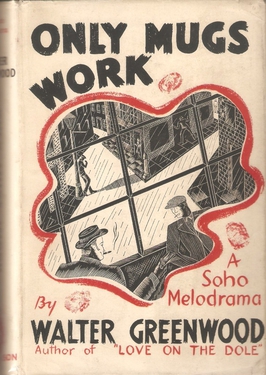
Only Mugs Work is a 1938 melodromatic crime novel by the British writer Walter Greenwood. Greenwood had established his reputation in 1933 with Love on the Dole, set in a district closely modelled on working-class Salford. In this case the setting is shifted to London's Soho, but features a similar blend of realism and drama. It is set amongst the spivs of the capital city. It was one of a number of novels that focused on the activities of the London underworld in the late 1930s including There Ain't No Justice, The House in Greek Street and Night and the City.
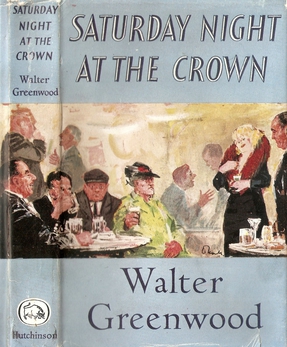
Saturday Night at the Crown is a 1959 novel by the British writer Walter Greenwood. It was his final novel, inspired by his 1954 play of the same title. The play had premiered in Morecambe in 1954 before running for 234 performances at the Garrick Theatre in London's West End from 1957 to 1958. He dedicated to the novel to Thora Hird who had starred in the play.
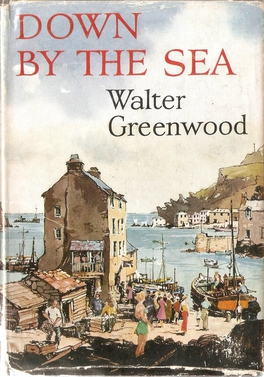
Down by the Sea is a 1956 novel by the British writer Walter Greenwood. It is the final entry of a trilogy set in the fictional fishing port of Treeloe in Cornwall. Durrall, the principal protagonist of the previous novel marries a woman and is able to prosper by opening his cottage as a tea house for tourists.
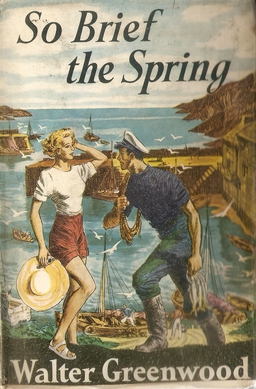
So Brief the Spring is a 1952 novel by the British writer Walter Greenwood. It is the first in the author's trilogy set in the fictional fishing port of Treeloe in Cornwall. It was developed out of a play which Greenwood had written in 1945. The novel is dedicated to Robert Newton who appeared in the play. It focuses on Randy Jollifer, formerly of the Royal Navy, attempting to settle down to postwar life in his home town. The book and its sequels sold steadily, without enjoying the spectacular popularity of his best-known work Love on the Dole.

What Everybody Wants is a 1954 novel by the British writer Walter Greenwood. It is the second of a trilogy set in the fictional fishing port of Treeloe in Cornwall during the postwar years. While the principal character of the first novel Randy Jollifer reappears, there is a shift to focus on the life of Darky Durrant. Durrant is a local poacher of gypsy heritage who, despite a distinguished war record as a commando, lives on the margins of society.

The Secret Kingdom is a 1938 novel by the British writer Walter Greenwood. Like his best-known novel Love on the Dole it is set in Salford. It portrays the working-class socialist Byron family, and particularly the eldest daughter Paula who tries to establish an independent identity after finding working a parlour maid. She encounters Bert Treville in nearby Manchester and the two begin a courtship. After his death due to heavy drinking, she brings up her son Lance as a single-mother, throwing her effort into her talented child she is vindicated when he emerges as a talented concert pianist - performing on national radio in the final scene.

His Worship the Mayor is a 1934 novel by the British writer Walter Greenwood. It was his second novel, following on from the success of his bestselling debut Love on the Dole the previous year. His new work drew on his experience as a Labour councillor, and focuses on corruption in local government a theme also addressed in Winifred Holtby’s South Riding. The novel features Sam Grundy, the bookmaker who had appeared in Love on the Dole.
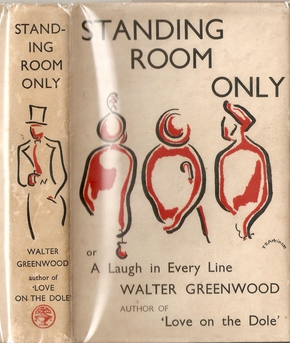
Standing Room Only is a 1936 comedy novel by the British writer Walter Greenwood. It was his third novel. Like his previous two, including his bestselling debut Love on the Dole, the work is partly set in his native Salford. The novel was somewhat self-reflexive as the protagonist Henry Ormerod strongly resembles Greenwood's own background and experiences. It was not as critically well-received as his two previous novels.

Something in My Heart is a 1944 novel by the British writer Walter Greenwood. It is a loose sequel to his debut and best-known novel Love on the Dole, a 1933 work set in Salford at the height of the Great Depression. This book presented a more optimistic view of a potential postwar future that was absent in the despair in the original novel.
